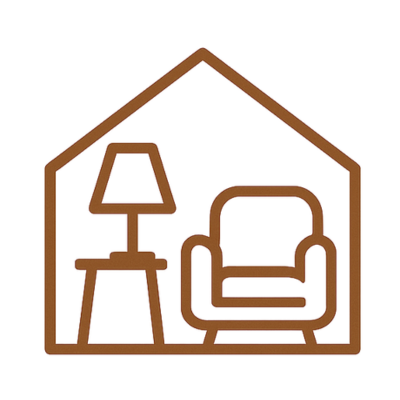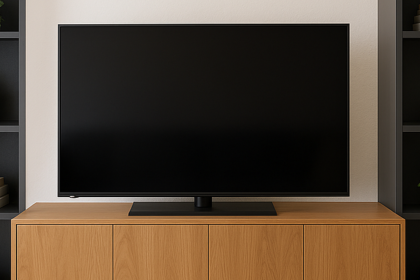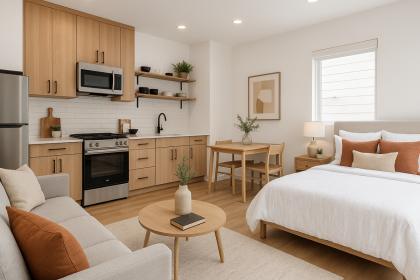I have designed many entertainment centers for living rooms, dens, and flexible family spaces. Through these projects I have learned that a well-planned entertainment center is more than a place for a television. It anchors the room, organizes technology, and highlights personal style. Whether you are furnishing a compact apartment or a spacious home, thoughtful design choices turn an entertainment area into a true focal point.
The Role of an Entertainment Center
An entertainment center serves as the visual and functional heart of a living space. It holds televisions, sound systems, and gaming equipment while providing display space for books, art, and décor. Because it immediately draws attention, the design must combine practical storage with attractive finishes.
My Design Approach
When I plan an entertainment center, I focus on visual balance, organized storage, and seamless technology integration. The goal is to create an inviting space that hides cords and keeps devices easy to access.
Built-In or Freestanding
Built-In Units
Built-ins provide a custom look that blends with the room’s architecture. They work well when a homeowner wants a permanent feature that adds value to the property. Built-ins can surround a fireplace, stretch from floor to ceiling, or include open shelving and enclosed cabinets.
Freestanding Units
Freestanding pieces are ideal for renters or anyone who may rearrange the space later. Options range from slim media consoles to large wall systems with integrated lighting.
Layout and Proportion
The right size and proportion keep the unit from overwhelming the room. I usually make the center slightly wider than the television for balance. For small rooms a low, streamlined console maintains an open feel. In larger rooms a wall-to-wall built-in can create a dramatic unified look.
Storage and Organization
Storage is key to keeping the space clutter free. I combine open shelving and closed cabinets so there is room for both display and hidden storage.
Open Shelving
Open shelves work for books, plants, and decorative objects while adding personality to the space.
Closed Cabinets
Drawers or cabinets hold gaming consoles and cords and maintain a clean appearance. Adjustable shelving allows for easy changes as technology evolves.
Materials and Finishes
Materials set the mood. I often work with natural wood for warmth and timeless appeal. Matte black or white lacquer creates a clean modern aesthetic. Glass or metal accents add lightness and shine. Mixing wood with metal or glass brings depth and character without overwhelming the room.
Lighting for Impact
Lighting elevates an entertainment center and creates a welcoming atmosphere.
Ambient Lighting
LED strip lighting behind the TV adds a soft glow and reduces eye strain.
Accent Lighting
Spotlights or puck lights highlight artwork or display shelves.
Flexible Options
Dimmable sconces or integrated track lights allow you to adjust the mood from movie night to everyday living.
Style Ideas
Style should reflect the rest of the home.
Modern Minimalist
Clean lines and neutral tones create a calm backdrop.
Mid-Century Modern
Walnut finishes and retro hardware add warmth and character.
Industrial
Exposed metal and reclaimed wood provide a rugged look.
Contemporary Coastal
Light woods and woven textures keep the space airy and relaxed.
Integrating Technology
Technology integration is essential. I plan for sound systems, gaming consoles with proper ventilation, and smart home hubs. Hidden charging stations and organized cable management keep everything neat and accessible.
Multi-Purpose Entertainment Centers
Many homeowners want their entertainment center to serve more than one function. Adding a small desk for a home office, a bar with wine storage, or a reading nook can transform the area into a multi-purpose hub.
Outdoor Entertainment Centers
For outdoor living I design weather-resistant entertainment centers with protective cabinetry and integrated speakers. These setups allow for movie nights or sports events under the stars without worrying about damage from the elements.
Why Good Design Matters
A carefully planned entertainment center increases daily enjoyment and adds value to a home. By blending storage, technology, and style you can create a centerpiece that supports your lifestyle and enhances the look of your space. Thoughtful design ensures the entertainment center feels like a natural part of the home and a reflection of your personality.



